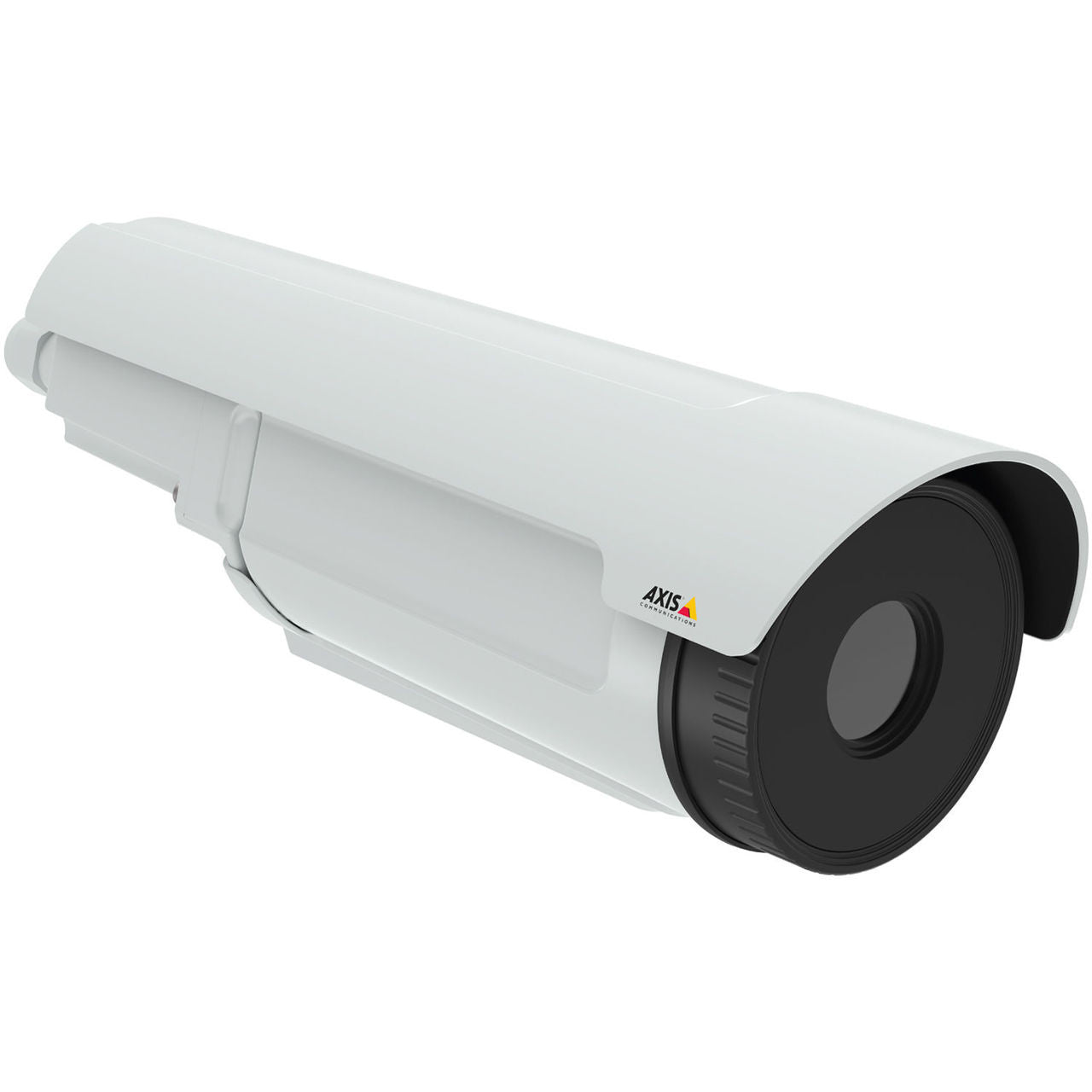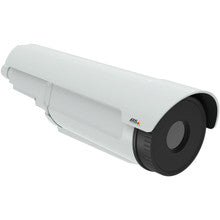AXIS Q1941-E PT Mount (0971-001) Features
- Comes with 35mm Lens providing 8.3fps
- Powerful performance for video analytics via ACAP applications
- Outstanding image contrast gives reliable detection and fast verification
- Easy and quick to install outdoors
- 384x288 thermal detection
- Electronic Image Stabilization
- Axis Zipstream technology
AXIS Q1941-E Overview
The bullet-style, outdoor-ready AXIS Q1941-E PT Mount offers the possibility of mounting the camera on a pan/tilt motor to increase installation flexibility. The broad range of lenses make it easy to detect and verify people, objects and incidents from pitch dark areas to a sunlit parking lot. A noise filter gives improved thermal image contrast while keeping noise levels low, without adding blur and ghost effects. AXIS Q1941-E PT Mount withstands harsh weather conditions and has a built-in heater for the window. Additionally, it offers Power over Ethernet and has a microSD card slot. AXIS Q1941-E PT Mount is easy to install and can easily be integrated with existing security systems. The following installation video shows how to mount the camera on a positioning unit. To reach an unobstructed field of view (360°) and a ground-to-sky view of 135°, you can mount the PT mount thermal camera on AXIS T99A11 Positioning Unit. AXIS Q1941-E PT Mount’s powerful processor lets you add the strength of the market’s widest selection of video analytics solutions to your surveillance solution. For example, video analytics applications from Axis and our partners support swift and appropriate response to detected events by analyzing them, automatically dismissing non-threatening ones and instantly notifying security staff of potentially critical situations. Your staff can then view sharp, detailed footage to determine the precise nature of the threat – and act accordingly. Thanks to a superb thermal image contrast, AXIS Q1941-E reliably detects and gives a fast verification of the situation, e.g. in perimeter surveillance. AXIS Q1941-E PT Mount is equipped with Axis Zipstream technology, which reduces storage and bandwidth requirements, while capturing important details in full image quality. It does this by compressing less significant areas more than areas of interest. In other words, areas devoid of people or movement are compressed more. This can be particularly relevant to applications where thermal IP cameras are likely to be used, since these are often applications in areas where access is highly restricted. Moreover, the Electronic Image Stabilization (EIS) helps the camera to provide a smooth live viewing when it is mounted on instable places and vibration can be perceived as an issue.






